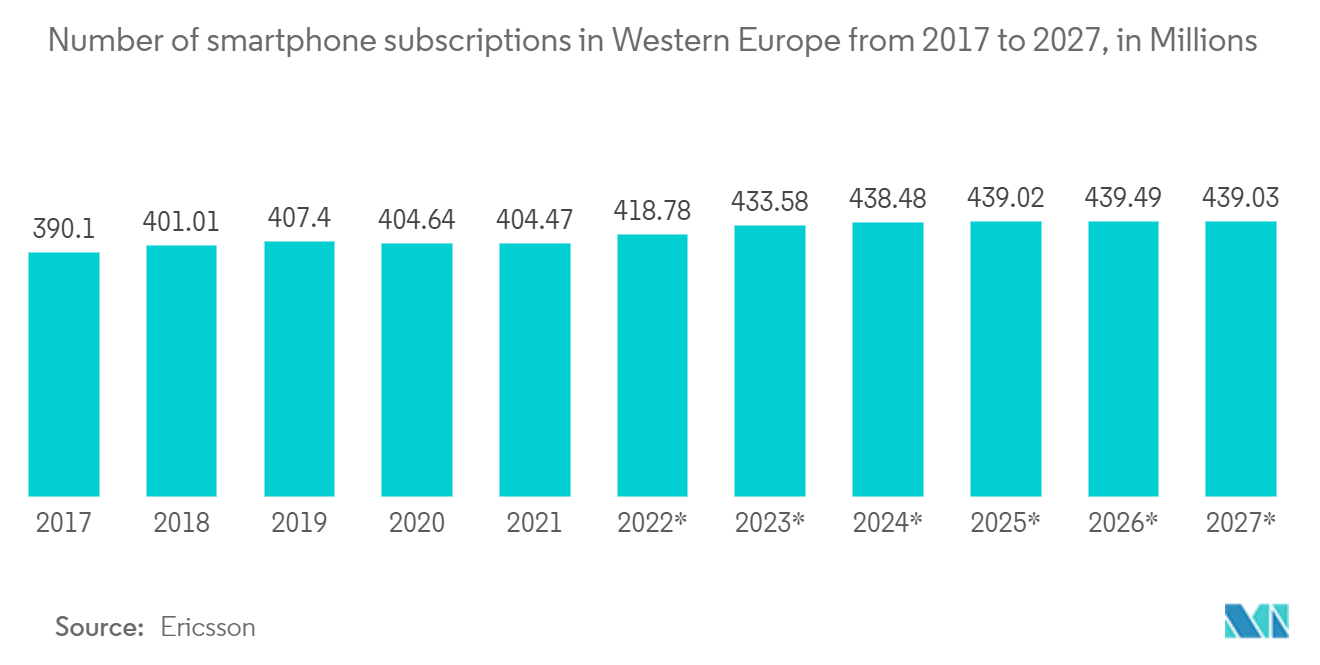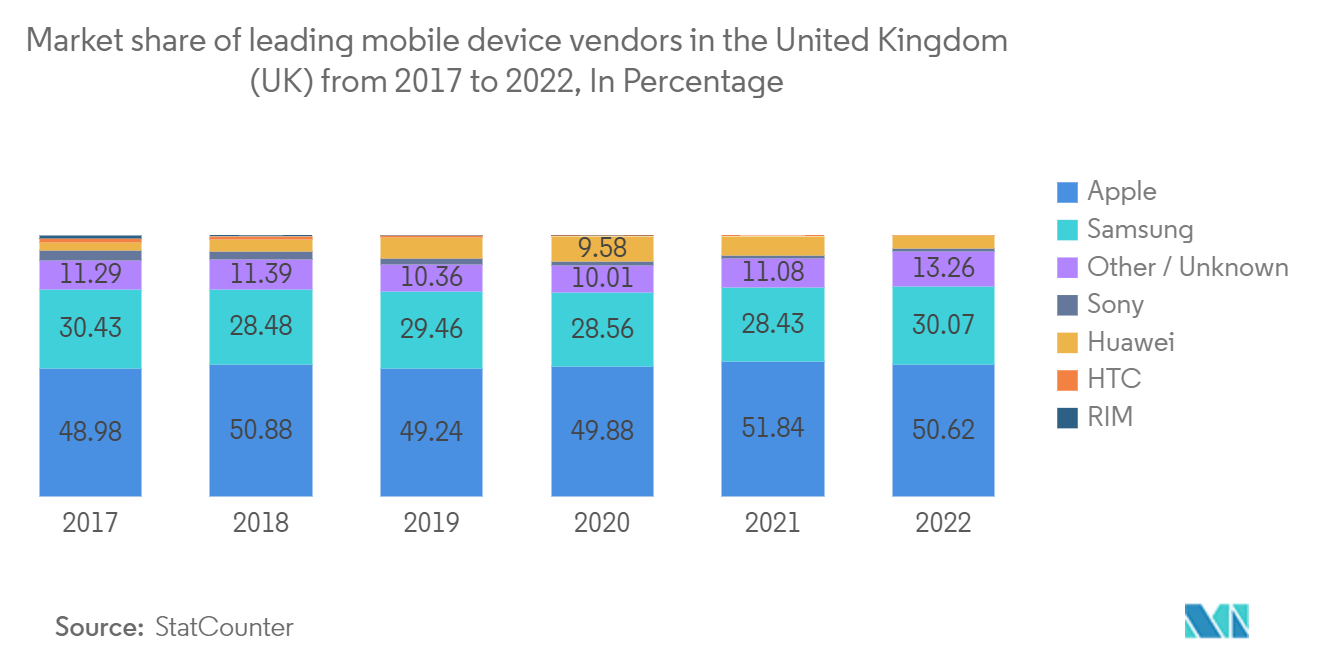Market Trends of Europe IT Device Industry
This section covers the major market trends shaping the Europe IT Device Market according to our research experts:
Smartphone Demand Boosting the Market
- The adoption of smartphones is also increasing across Europe. By the end of last year, smartphones accounted for four out of every five mobile connections in Europe. According to the GSMA report on the mobile economy in Europe in the current year, there was an 80% smartphone penetration rate in Europe last year, which is expected to rise to 84% in 2025. Also, by the end of 2025, the total number of mobile subscribers is expected to reach 480 million, adding 6 million subscribers between last year and 2025.
- Germany, the United Kingdom, and France are the three largest smartphone markets in Europe. Speedy coverage of internet networks and the accessibility of 5G connections are attributed to the region's demand for 5G-enabled smartphones. Germany and the United Kingdom are anticipated to have the leading 5G coverage across the region, i.e., 59% and 61%, respectively, by 2025.
- The breakdown of smartphone shipments in Europe by vendor shows that Samsung and Apple were the market leaders in the previous year's fourth quarter. Also, Xiaomi is gradually peaking its demand in the European market. It grew from 4% in the first quarter of 2019 to 24% in the second quarter of last year. Even if Samsung and Apple's combined market share in Europe has changed throughout the years, they still controlled more than half of the market in the fourth quarter of last year.
- With the robust growth in smartphone phone usage across the region, consumers are now utilizing their mobile devices, such as smartphones and tablets, to buy products and services, fueling the expansion of e-commerce. More people can now use m-commerce services because more people have access to and use the internet. This is helping the sector grow.
- According to an Ericsson report, Western Europe will have 439 million smartphone subscribers by 2027. Western Europe had over 404 million smartphone subscribers last year.

The United Kingdom Adds Substantially to the Market
In the United Kingdom, the laptop market will expand significantly in the next year. These portable gadgets have become quite popular due to their great degree of adaptability for usage in both professional and domestic settings. As a result of the coronavirus (COVID-19) epidemic, more people are now working or attending school from home. Investments were made in new computer hardware to make hybrid systems more effective and to create incredibly portable items like laptops and tablets.
- Customers in the United Kingdom frequently choose Apple's range of MacBook devices, which fall into the more expensive price range of PCs on the market. As laptop brands commonly found in United Kingdom homes, Hewlett-Packard (HP), Acer, Lenovo, and Dell also score well. At nearly 27%, HP had the highest laptop ownership rate in the country.They are followed by Apple, Acer, and Dell, with 21%, 19%, and 19% shares in the market, respectively.
- Robust internet coverage in the country is attributed to the demand for smart devices like laptops, tablets, and smartphones. By 2025, 5G would account for nearly half of all mobile connections in Europe.That said, the number of 5G subscribers is expected to reach 45 million in the United Kingdom by 2025.
- Over the past two decades, the smartphone market in the United Kingdom has experienced rapid growth. The United Kingdom has the highest smartphone adoption rate in the whole region. According to the GSMA report, the country's smartphone adoption rate is expected to increase from 86% last year to 88% in 2026. Additionally, by the end of 2025, there will be 65 million smartphone connections in the United Kingdom.
- According to a StatCounter report, Apple has over 50% of the United Kingdom market for mobile devices in the current year, making it the market leader. Samsung finished second with a market share of nearly 30% in the United Kingdom. Both top suppliers were far superior to the remainder of the United Kingdom's mobile device manufacturers.


